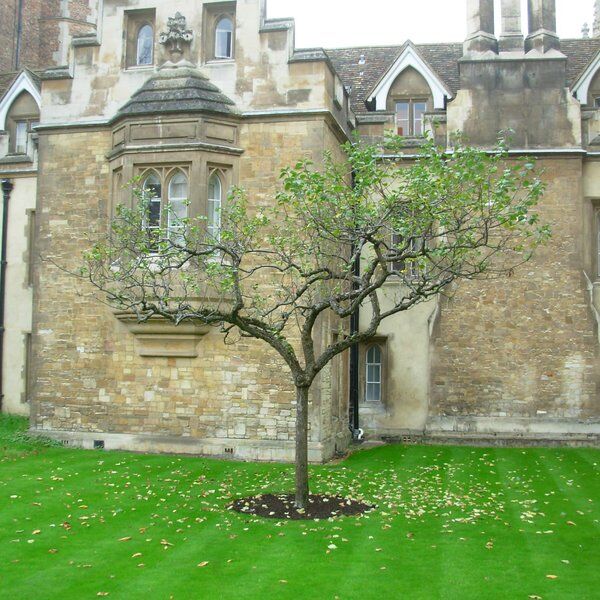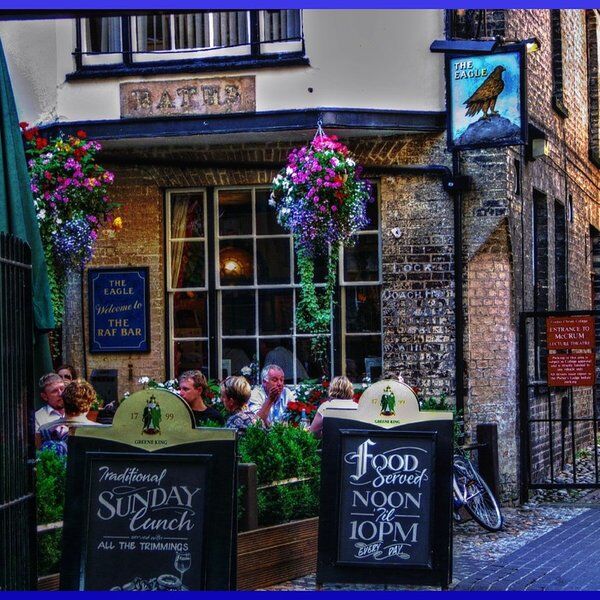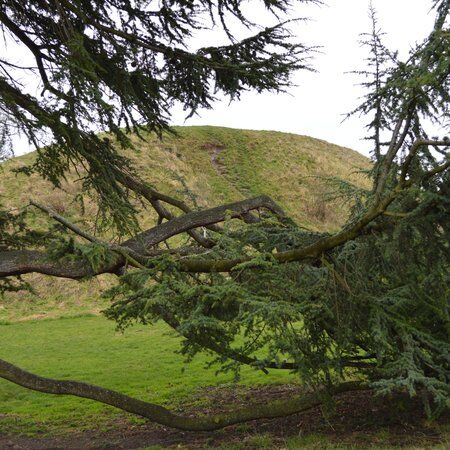
Exploring the Castle Mound
Castle Mound, rising 33 feet above the heart of Cambridge in England, silently observes the surrounding city and offers the best views as Cambridge's highest point. Originally constructed after the Norman Conquest, Cambridge Castle held strategic importance guarding the crucial northern route of England.
Throughout history, Castle Mound witnessed many conflicts including the Anarchy and the First and Second Barons' Wars. In the mediaeval period, strongholds like Cambridge Castle symbolised wealth and power but over time, its stonework was repurposed for the construction of neighbouring colleges, leaving behind only the towering motte and scattered earthworks. Today, Castle Mound, which is free to visit, is all that remains.
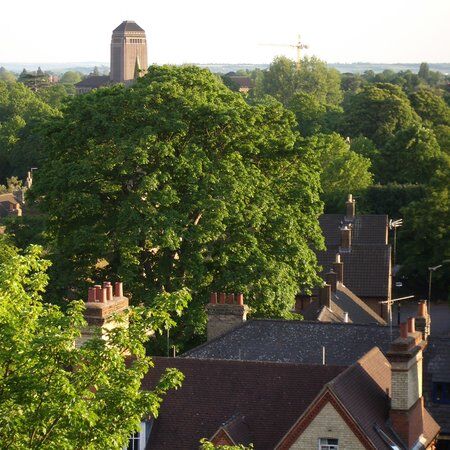
Origins and Construction of Castle Mound (11th Century)
The Castle Mound site, originally an Iron Age hill fort, was strategically chosen by William the Conqueror in 1068 for the construction of a new castle during his campaign to capture York. Built on the old Roman route from London to York, the castle, originally known as Grantabridge, was a crucial defensive structure against rebellion in the area. The initial construction, conducted by Picot, the high sheriff, resulted in a motte and bailey design, and required the demolition of 27 houses. William's castle became an administrative hub, with monthly courts, a sheriff's office, and a prison dungeon.
Unrest for Castle Mound (12th–13th Centuries)
Throughout the 12th and 13th centuries, Cambridge Castle got caught up in the conflicts of the time. During Anarchy, a civil war between England and Normandy (1135-1153), the castle was briefly captured by Geoffrey de Mandeville, on behalf of the Empress Matilda. However, it was soon reclaimed by King Stephen's forces.
Under rulers like Henry II and King John, the castle underwent improvements. Despite an expansion during King John's reign, the castle fell to rebel barons during the First Barons' War in 1216, only to be regained after the conflict. It also endured attacks during the Second Barons' War in 1266.
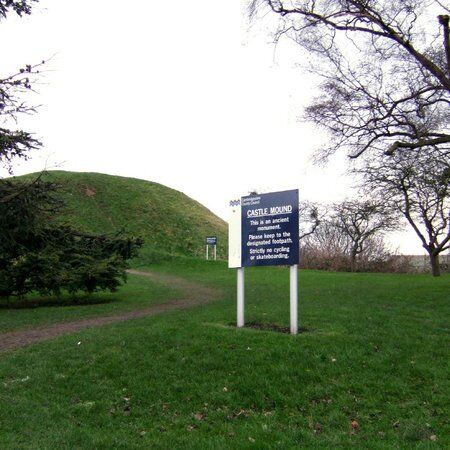
Edward I's Cambridge Castle (Late 13th Century)
It wasn't until 1284 that Cambridge Castle underwent a substantial transformation under the reign of Edward I. Over the course of 14 years, the king invested heavily, spending at least £2,630 to reconstruct the fortress in stone. The result was a four-sided castle with circular towers at each corner, fortified with a gatehouse, a circular stone keep on the motte, and a barbican. Despite never reaching full completion, Edward I's Cambridge Castle became a "major fortress in the latest fashion."
Castle Mound in Ruins (14th–17th Centuries)
During the 14th century, Cambridge Castle began its descent into disrepair. Neglected by successive monarchs, it gradually fell into ruins, with its hall and chamber becoming roofless by the 15th century. King Henry VI furthered its decline by ordering the destruction of these structures and reusing their stone to construct King's College in 1441. Other parts of the castle were repurposed for Trinity College's chapel. Even more stonework was allocated by Mary I in the 16th century for the construction of a mansion in the nearby Fens and for the benefit of Emmanuel and Magdalene colleges.
In the first year of the English Civil War (1642-1651) Castle Mound was occupied by Parliamentary forces. On order from Oliver Cromwell the castle underwent emergency repairs. Two new earthwork bastions were added and a brick barracks was constructed within the old bailey.
"Very strongly fortified... with breastworks and bulwarks.”
Despite these improvements, the castle’s fortifications were intentionally damaged by parliamentary forces in 1647, rendering them useless for future military purposes.
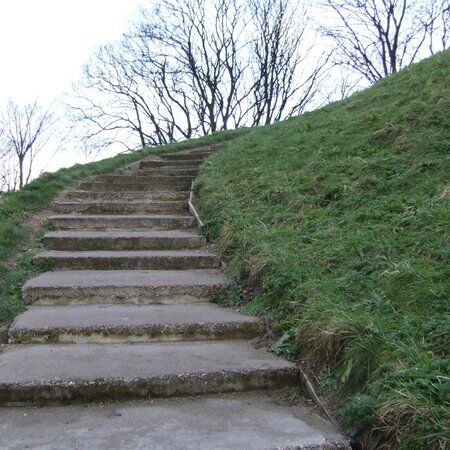
Decline and Transformation (18th–19th Centuries)
By 1785, Castle Mound’s remaining walls and bastions were dismantled, leaving only the gatehouse and earth motte standing. Despite its dilapidated state, the gatehouse continued to serve as the county gaol into the 19th century. Criminals were held on the ground floor, while debtors occupied the upper floor. Like many similar institutions of the time, it operated as a private business, with the gaoler receiving £200 annually from the county in 1807.
However, the fate of the gatehouse as a prison came to an end with the construction of a new county prison within the castle's former bailey. Built between 1807 and 1811 by G. Byfield, this octagonal structure was influenced by the designs of prison reformer John Howard. The castle gatehouse was subsequently demolished to make room for a new county court building.

As the 19th century progressed, the need for the gaol diminished, particularly with the existence of Huntingdon Gaol, which was large enough to accommodate prisoners from both Huntingdonshire and Cambridgeshire. By 1920, the castle gaol had been repurposed as a branch repository of the Public Record Office, a role it held until 1928 when Cambridgeshire County Council acquired the building.
Eventually the building met its end completely in 1932 when it was demolished. As seemed to be the recurring theme for Castle Mound throughout history, its bricks were repurposed in the construction of Shire Hall.
Features of Castle Mound
Motte and Moat
The motte can be found in the centre of Castle Mound. It is a raised earthwork platform, often artificially constructed, surrounded by a deep ditch known as the moat. Historically, these defensive features were integral to castles, providing strategic advantages against attackers.
Drawbridge and Gatehouse
Access to the castle was guarded by a drawbridge, a movable bridge spanning the moat, leading to the gatehouse. The gatehouse, fortified with twin towers and defensive mechanisms such as arrow loops and portcullises, was the primary entry point and a crucial line of defence against enemies.
Battlements and Turrets
Perched atop the castle walls, battlements provided strategic vantage points for soldiers to survey and defend the fortress. Turrets, situated at the highest points, offered views of the surrounding landscape so soldiers could detect any approaching threats early on.
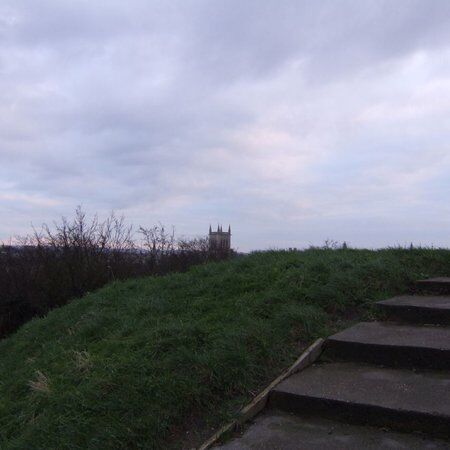
Great Hall and Chambers
Within the castle lay the Great Hall. This space hosted royal gatherings, feasts, and judicial proceedings—it was the castle's social and administrative hub. Surrounding the Great Hall were private chambers, including cabinets and bedrooms, which the castle’s residents would have used.
Kitchen and Chapel
Adjacent to the Great Hall, the kitchen would have been a very busy area in the castle. Nearby, the chapel provided a place of worship and reflection, a central feature of mediaeval castles.
Undercroft and Icehouse
Beneath the castle's ground floor lay the undercroft, a vaulted chamber used for storage and assembly. The icehouse was an early form of refrigeration, preserving any perishable goods with harvested ice from nearby water sources.
Visiting Castle Mound Today
Despite their ancient origins, UK law has designated Castle Mound and the old earthworks as Scheduled Ancient Monuments. This official protection ensures that these remnants of the past are preserved for visitors to appreciate and explore, which can be done daily as the site is open to the public with no admission fee. Visitors can ascend the motte and take in panoramic views of the city's historic buildings, providing a unique perspective on Cambridge's evolution over the centuries.

Discover More of Cambridge With CityDays
Ready to discover more of what Cambridge has to offer?
CityDays have a brand new treasure and scavenger hunt in Cambridge, which combines the fun of an escape room with the historic facts and whimsical trivia of a walking tour!
Take the stress out of planning your visit to Cambridge and book your adventure today!
Not visiting Cambridge this time? Don’t worry, you’ll find us all over the world.









